"AROUND NORTHERN TUNISIA IN ONE - VERY LONG - BUT FABULOUS DAY"
Neatly dressed in a crisp white shirt and carefully pressed long black trousers, our driver Mohammad was once a senior manager with an Italian road construction company. A victim of the 2011 Tunisian Revolution, he was unemployed for several years after the Italian company, fearing the savagely dealt with riots and political uncertainty, pulled its operations out of Tunisia. And like many well educated and competent Tunisians, Mohammad now in perhaps his early thirties, had to accept any job he could - and while we were in Tunis was working as a driver for AVIS and other tourist companies.
Mohammad spoke excellent English and was knowledgeable and informative about the history of Tunisia, and during on our long day provided us with a valuable insight into the Revolution and life of Tunisians today.
Ms Fawzia had again organised our travels. She was keen for us to visit the surrounds of Tunis, including the famous ruins of Dougga and Thuburbo Majus but was uncertain as to whether we would have time to drive the long journey to the ancient Carthaginian town of Le Kef, on the border of Tunisia and Algeria. We were keen however to visit Le Kef, not only because of its history but also as the journey would hopefully provide us with a better picture of Tunisia and its peoples. It was as close as we could get to Algeria and anyway, we just may find that elusive donkey...
Fortunately Mohammad had plans of his own. "I can take you to what I think are better ruins than Dougga. It is via a 'Secret Road'. Would you like to go there as well as Le Kef?" he asked. Needless to say, the Oudhna ruins as well as a trip to Le Kef sounded good and we were happy to take his advice.
The road to Oudhna took us through the depressing outskirts of Tunis. It didn't take long before we left the modern and very civilised city centre and passed through poorer looking suburbs, where olive groves lived oddly side by side with rusting corrugated metal clad factories and ugly motor vehicle demolition yards. Like many growing cities, it was obvious that the rural fringes were being eaten up by an ever increasing urban sprawl. Cement block houses lined dusty streets and sadly, piles of rubbish were strewn along the roadside.
During our trip to Oudhna, Mohammad talked to us about life in Tunisia. Prior to the Revolution, high unemployment, inflation and a shocking disparity between the rich and poor made life for the average Tunisian peoples, particularly those in rural areas, extremely tough. Together with blatant political corruption (including the unethical and greedy behaviour of the families of politicians) and perverse civil liberty restrictions, the toxic cocktail formed the basis for a people's revolt and the subsequent ousting of the former Ben Ali government.
The Revolution was not without its sacrifices. Brutal police and security force action and scores of deaths resulted in self declared curfews of cities by the Tunisian people. Tourism ceased and the country virtually shut down. Businesses closed and foreign companies withdrew their investments and their staff, resulting in a turbulent decline in the economy and massive unemployment - and the ignition of the Arab Spring.
Mohammad was careful with his appraisal of the current situation but he was optimistic about the new government, their ongoing social and economic reforms, support for civil liberties and freedom of speech. "It wasn't always like this" he said quietly. "People were afraid to speak out. Life is improving now and foreign investors are returning".
According to the International Monetary Fund (IMF) 2014 Regional Annual Economic Outlook for Tunisia, the country is slowly recovering and is well ahead of many of its neighbouring African and Middle Eastern nations. Tunisia is no longer experiencing economic turbulence and a growth rate of 2.8% is forecast for 2015. Unemployment, particularly amongst a highly educated youth (up to 30%) remains a major concern with resulting social problems and associated drug abuse. Tunisian youth comprises around 20% of the 11 million Tunisians but disproportionally accounts for over 40% of the unemployed labor force.
Commentators are cautiously hopeful that the situation for Tunisia will continue to improve with a liberalisation of restrictive labour market policies, strengthening private sector contribution to growth and reform of the education sector to better reflect the skills required by the private sector.
Tourism was at the time a very positive prospect for the Tunisian economy. Its strong trade links with Europe and relatively tolerant outlook on religion, together with a warm Mediterranean climate and very attractive coastline has made the country very appealing to European tourists - and even those as far away as Australia.. The shocking terrorist attacks in 2015 however will sadly provide enormous challenges for future tourism in Tunisia.
Time of course will tell, but at the time of our visit, there appeared to be a national and internal optimism about government reforms and the economic future of this tiny African nation.
OUDHNA
Oudhna (also known as "Uthina") is located approximately 35 kilometers south-west of Tunis, overlooking the fertile agricultural plains between Jebel (Mountain) Ressas, Jebel Bou Kornine and the Wadi Meliane (a dry river bed which only flows during the wet season).
According to historians, little is known about the origins of the city of Oudhna although it is thought to be probably a Berber-Punic urban centre transformed into a colony under the Roman ruler Octavian-Ausgustus. One of the oldest colonies in Africa, its golden age lasted throughout the first two centuries AD, declining to a large village in the Arab-Moslem period.
The 1895 Murray Handbook for Travellers in Tunisia and Algeria* (which of course every traveller possesses....) describes Oudhna "The present condition of the ruins proves it to have been a place of very considerable importance. They cover an area of several miles, and it must certainly have contained a very large population". (*The Murray Handbooks were first published by John Murray in London in 1836 and became the definitive travel books of the nineteenth century).
Driving through acres of golden ripening barley fields, Oudhna like a mirage, seemed to arise from nowhere. The robust ruins were in very fine condition and although much of it has been restored, its eerie atmosphere and sense of place was still very much apparent. Strangely enough, there were no other tourists at Oudhna and it was quite an extraordinary opportunity for the three of us to wander freely about the site and absorb the history of this remarkable ancient city. I have always found it an odd feeling to experience such quiet and solitude in a historic site like Oudhna which at one stage would have been a thriving, bustling city. You could almost hear the noises and feel the pulse and presence of the people of this ancient time.
It was only after 1993 that major excavations uncovered much of the Oudhna ruins and it is estimated that there is much more work to be carried out. This most probably is the reason that Oudhna is not particularly well known, nor commonly listed as a tourist site. It is now classified as an archeological park and for us it was well worth a visit.
Oudhna has a small museum like reception with information charts and wonderful reconstructed displays of the ancient mosaic works. A very useful and well presented information booklet "Oudhina 'Uthina' - The Archeological Park", prepared by the Agency for Heritage Development and Cultural Promotion, is for sale for 3.500 DT or less than US$2.00.
THE AMPHITHEATRE
Situated on the northern edge of the old city the amphitheatre occupied a commanding location which was befitting for such an important civil structure. The site was chosen specifically so that the lower part of the amphitheatre could be set into a cavity set against the hill slope. Only the upper part of the building that had a storey of arcades and an attic storey was built above the ground. An underground vaulted gallery aligned to the major central axis provided access to the amphitheatre basement.
The handsome monument measures 120 by 89 meters and its central elliptically shaped arena 67 by 36 meters. It had an estimated capacity to seat a staggering 16,000 people which makes it the third largest amphitheatre in Tunisia (after Carthage and El Jem).
THE CAPITOL
Oudhna's Capitol is considered possibly to be the largest temple of Roman Africa and was dedicated to the three supreme Roman deities Jupiter, Juno and Minerva. Today, there is virtually nothing left of the original temple. Careful restoration work however has produced a wonderful yet partial replica.
The temple once sat on a very high podium built for the purpose of elevating the building to ensure it dominated the city and the surrounding plains. The central temple measured 43 by 27 meters and was adorned with six large Corinthian columns and two large flights of stairs.
THE AQUADUCTS
Underground cisterns in the city were filled by long aquaducts which brought in drinking water from springs in the surrounding hills. The old cisterns can be seen today, lined with ancient bricks.
MOSAICS
Not far from the Capitol we stumbled across large sheets of mosaic works in the shapes of Soloman's knots. They were wonderfully well preserved, as were many of the mosaics on display in the reception area.
TOWARD DOUGGA: BLAME IT ON THE BOOGIE
Our road from Oudhna followed the ruins of the giant, once proud aquaduct for some 60 kilometers through rural countryside housing olive groves, loquat orchards, green houses and fields of ripening barley, oats and wheat. Broad acre agriculture looked efficient and highly mechanised, with large modern tractors and harvesters. No donkeys to be seen....
Mohammad's Egyptian music blasted as we sped alongside the main railway line to Dougga. Dusty rural villages of Kheldhia, Mornag, Zaghuam and Haneh became just a blur of people, carts and trucks. Mohammad chatted happily and it was all good fun - and a great way to see the real Tunisian countryside at long last. And to our surprise, we were heading to Dougga. All part of the fun of travel; we never seem to have any certainty of where we will end up.
"What is the train trip like?" yelled Alan above the blaring music. "Not good" bellowed Mohammad. "But better than the bus". Looking at the train carriages bursting with hot passengers, many of whom were hanging out the door and windows, I wondered just how bad the bus could be.
For rapid changes of musical genre and like Michael Jackson who couldn't control his feet, our Mohammad who had a similar problem with his hands, kept us entertained by constantly flicking from one CD to another.
"Don't blame it on the sunshine
Don't blame it on the moonlight
Don't blame it on the good times
Blame it on the Boogie.."
At an ear shattering volume, it was all very amusing and we would have to say, it sure was "the good times".
The countryside became more arid. Sun bleached houses shimmered in the dusty sand. Most of the older women wore hijabs or chadors, but many of the younger women walked freely without head scarves or hijabs, heads glued to mobile phones or iPods. Motor bikes pulling carts and even donkey carts became more common. Shop vendors selling smoky kebabs splashed water onto the road to dampen the billowing dust. We could have well been in Iran, Pakistan or even far western China.
A large salt pan and an adjacent lake on our right caught our attention. Mohammad explained that it was Lake Sizoubi where migratory Flamingos visit for two months of the year. And as we looked closer, the lake was a seething mass of bird life. Apparently, the north of Tunisia is famous for its migratory Flamingos. The Greater Flamingo (Phoenicopterus ruber), a sub-tropical bird, prefers alkaline or saline lakes or estuarine lagoons with very little vegetation. Although not usually a migratory species, the Flamingo will migrate if water levels rise or if the food supplies decrease. They will however usually return to their native colony to breed. From the literature I have sourced, it appears that the Greater Flamingo migrates to Tunisia from southern France.
DOUGGA (THUGGA)
There was no-one at Dougga either. No tourists and no officials taking entrance fees. And nowhere to buy a guide book or even hire a guide for that matter. We found this very surprising as Dougga is so famous for its fabulously well preserved ruins and is one of the most highly visited tourist attractions in Tunisia. Of course, being on our own again had its pluses. The shame was that unlike Oudhna, we did not have a guide book and so we had little idea what we were looking at.
Lonely Planet Guide recommends you take a picnic lunch. We would also recommend that you buy a guide book and/or or take the following on-line articles with you. Whilst writing up this blog, I came across two articles "Dougga (Thugga) Parts 1 & 2", written by Ian Dickson (Melvadius Macrinus Cugerni) which I found to be very useful and informative. And the good part is that the photos of the ruins have captions. Furthermore, the author kindly allows use of his pictures for non-commercial purposes. The link to Part 1 is: http://www.roman-empire.net/articles/article-030.html Once you are in Part 1, you can click on to Part 2.
Dougga is an ancient city site with rich Numidian-Berber, Punic, ancient Roman and Byzantine history. Located on a 65 hectare site some 110 kilometers south-west of Tunis (about 112 kilometers south-west of the Oudhna ruins and 60 kilometers east of our next destination of Le Kef), the UNESCO Heritage Listed Dougga archeological site is set on a wonderfully protected hillside location overlooking the fertile Kalled Valley and the Tebersouk Mountains. Today, it is regarded as one of the most spectacular Roman sites in Tunisia and on being there you can most certainly understand why.
Over the centuries, Dougga has seen tumultuous times. Originally a Phoenician city in north Africa, it was part of the Numidian kingdom (the Numidians, ancestors of the Berbers, were an ancient Libyan civilisation whose kingdom was part of present day Algeria and Tunsia) at the end of the 4th century BC when it was conquered by Agathocles the Tyrant of Syracuse.
Following the Roman invasion during the Third Punic War in the 2nd century BC, the new ruling government took a more liberal attitude to Dougga allowing it to retain much of its independence. Serious Romanisation of its buildings only began around 150 AD during a period of much prosperity where a 3,500 seat theatre, an odeon or small theatre, a hippodrome and an amphitheatre were constructed along with two major aquaduct systems to supply the city with drinking water. The golden period for Dougga ended in the 4th century AD following the invasion of north Africa by the Vandals.
In the 6th century AD the Byzantines conquered the city and held it until the 7th century AD when it was lost to the Islamic invasion. During the siege, the Byzantines made a valiant attempt to fortify the central area of the city, using mostly stones quarried from the buildings it was forced to abandon. Some of the Byzantine walls remain today.
Our self made tour of Dougga, with Mohammad's helpful assistance, took in the following sites:
THE CAPITOL
The Capitol is a Roman temple which was built in the 167 AD and dedicated (as was the Capitol in Oudhna) to Rome's protective triad of Jupiter, Juno and Minerva.
The incredible preservation of this building is thought to be largely a result of the Byzantine fortification wall which is still standing beside the temple. A series of eleven stairs takes you to the front portico where eight meter fluted Corinthian columns bear an almost perfectly preserved pediment with the depiction of Emperor Antonio Pius's "elevation by an eagle to godhood".
The commanding Capitol structure, proudly sitting on an elevated site above the ruins is quite an extraordinary sight that can be seen from most parts the Dougga archeological park. In splendid condition, we could well understand that historians consider it to be the most beautiful Roman building in Africa.
THE THEATRE
The theatre, which was built in 168 or 169 AD, is regarded as one of the best preserved examples in Roman Africa. It had the capacity to seat 3,500 spectators which is pretty amazing given the the total estimated population for Dougga at that time was only 5,000.
The splendid theatre comprises three tiers and the stage is set in a semi circular shape. It overlooks the beautiful undulating valleys and distant Tebersouk mountains.
THE FORUM (THE ODEON)
The small forum is just 924 meters square in size and stands on a site surrounded by porticos, overlooking the Kalled Valley. The forum in most parts is sadly in poor repair, the better preserved seating area being protected from destruction by the Byzantine walls. Nevertheless, it has a certain eerie atmosphere and is well worth the visit.
THE LICINIAN BATHS
The Licinian baths are in very fine condition, with most of the walls intact as well as a long tunnel used by the slaves working in the baths. Apparently the baths were donated to the city by the Licinian family in the 3rd century AD and were used primarily as winter baths. Like many of the other sites, the views of the surrounds are fantastic.
THE LIBYO-PUNIC MAUSOLEUM
Mohammad was keen to show us an historic site some 200 meters or so from the main ruins. The walk down to the mausoleum followed an ancient cobbled path. Flowering thistles, wild fennel, red poppies, the ubiquitous prickly pear and a low stone wall lined the pretty trail. The views over the valley revealed a patch work of yellow heading barley and dark green young wheat crops, interspersed with linear olive groves and citrus orchards. The very pleasant walk there was worthwhile even without the amazing mausoleum which dates back to the 2nd century BC. The sad thing is that at the time we had no idea of its age nor its significance.
The Mausoleum of Ateban is apparently a very rare piece of Numidian architecture. In fact it is the only piece of Numidian architecture remaining at the Dougga site. The tomb is 21 meters in height and the original bilingual inscription states that the tomb was dedicated to the Numidian Prince Ateban.
In 1842 the tomb totally collapsed when the unhelpful British Consul in Tunis Thomas Reade removed the base inscription stone. Fortunately, it was fully reconstructed in the 20th century by French archeologist Louis Poinssot who painstakingly pieced together the fragments which had laid on the ground since its demise. The tomb is accessed by a pedestal with five steps and on the northern side of the podium there is an opening to the funeral chamber which is enclosed by a large stone slab.
On the way back from the mausoleum I had a good look at what turned out to be a particularly unfriendly Prickly Pear Plant. Regarded as a highly noxious weed in Australia (finally controlled by the Cactobastus beetle), we were surprised to see that these Plants with Attitude are widely used in both Sicily and Tunisia as a form of hedge and/or wind break. They are also used for their fruit and for feeding the Cochineal Beetle, whose red pigment is widely used in natural dyes. The cactus hair like thorns (glochids) are "lethal" in that just one brush against their succulent parts can leave hundreds embedded in your skin. I should have known better. I found out the hard way - ending up with an angry elbow looking like a hedgehog... Prickly Pear has a habit of "walking" and in both Sicily and Tunisia we saw numerous examples of hedges that had continued to grow in width for many meters; the control of which will be extremely difficult.
Dougga is well worth the visit, It is so filled with historic ruins that you could easily spend half a day roaming around the site. The archeological park is literally littered with ancient tombs, relics with carved inscriptions and gates, porticos, baths and crumbling buildings. Don't forget your guide book....
TOWARD "FRONTIER ALGERIENNE"
It was exciting to be heading toward Algeria. As mentioned earlier in this blog, we were forced to cancel our plans to visit the country after terrorists began targeting western foreigners in 2013. Well, if we could not enter Algeria safely, then the next best option was to peer over the border. And we would be doing this from both sides of the country as our coming travels to Morocco would include a trip to Ouzina, an isolated desert camp on the western border of Algeria. And after all, it was the brilliant white hot light of Auguste Macke's painting "Market in Algiers" (even more so than Market in Tunis) that reminded us of our wonderful visit to the city of Hotan in the western Chinese Xinjiang Province in 2011 and initially sparked our interest in northern Africa.
I wondered how our Algerian travel agent Yong was going. He had been so helpful in organising our travels and was so very disappointed when, in light of the terrorist attacks, his travel company had suspended all travels into the Sahara.
Sixty kilometers out of Le Kef and Mohammad was able to tune his car radio to Radio Le Kef. "This station plays great Arab music!" he yelled as we hurtled our way toward the Algerian border and our destination of Le Kef. It was good music too and certainly set the right atmosphere for our trip.
All along the roadside we noticed numerous small stalls selling petrol in plastic gerry cans. Mohammad explained that the petrol was bought in Algeria and sold on the black market for a considerably cheaper price than that commercially available in Tunisia. While it was illegal, the entrepreneurial practice was obviously tolerated as we noticed a lot of police vehicles on the road.
We were surprised how green and fertile the countryside was toward Le Kef - a lot of which appeared to be under irrigation. It was the barley harvest and endless trucks plodded along the road, brimming with loads of newly harvested crops. In the brisk afternoon breeze, fields of swaying verdant wheat crops were reminiscent of a Van Gogh painting. It was very easy to relax and take in this lovely countryside.
Our relaxation however came to a swift end. Around a sharp bend, Mohammad skidded and swerved just in time to miss the remains of a shocking multiple car accident. Frenzied locals frantically waved us on to the other side of the road. It was a dreadful scene and from what we could see, there was no way the drivers and passengers of any of the totally flattened motor vehicles could have survived.
LE KEF (EL KEF or CHAKBANARIA)
In the mid afternoon we reached Le Kef, an Arab city perched high on the cliff face of the flat mesa like Jebel Dyr. In the hot pink African light, Le Kef was nothing like anything we had seen since we began our travels in Tunisia. A fairy tale-like Byzantine kasbah (citadel or castle), a grand mosque and stately white washed buildings with tiny windows dominated a fascinating cityscape. Some of the architecture revealed a strong Spanish influence, but most of the houses and apartments were built in traditional square Arab style. And strangely enough, with the exception of some weary looking shop holders and the occasional group of orderly school children returning home from school, the city appeared almost deserted; almost as if it had closed up for the day.
Le Kef (also known as El Kef) is located 175 kilometers west of Tunis city and is only 40 kilometers from the Algerian border. Its name is Arabic for "the rock".
Like most of present day Tunisia, Le Kef fell victim to the rule of the Carthaginians and to the invasions of the Romans, Vandals, the Ottomans, Berbers and the French. During World War II, Le Kef was the provisional capital of Tunisia. Furthermore, it's strategic border position made it the command centre of the Front de Liberation Nationale during the Algerian War of Independence against the French in the 1950's.
Today, it is an important Islamic and also Jewish religious centre, and capital of the Kef Governorate. The city houses a population of around 50,000.
We had only time for a brief driven tour of the city - a great shame as it did look absolutely fascinating. And we knew that in addition to its historic buildings, it housed a fine old medina and a very well regarded museum.
Mohammad was understandably tired from the long drive and we all appreciated a relaxing half an hour in a Le Kef cafe. Somehow, however, the gaudy plastic green and red cafe seats and our cans of Sprite soft drink didn't really resonate with the fabulous atmosphere of Le Kef city....
A SURPRISE RETURN TO TUNIS VIA KAIROUAN
Long afternoon shadows reminded us that it was getting late for our return trip to Tunis. After driving for some distance, we came across an intersection signposted to the right "TO KAIROUAN".
"Would you like to go to Kairouan?" asked Mohammad. We were quite surprised as we knew it was a long trip back to Tunis but if Mohammad thought it was a good idea - then why not?
The fertile countryside out of Le Kef was looking prosperous. Large wheat silos and undulating scenery reminded us very much of rural townships in the Riverina area of Australia. There were even flocks of sheep on the road - just like back home. Well, that was until we came across a shepherd in traditional Tunisian dress walking with his sheep but with one hand glued to a mobile phone and the other to his wooden staff.
Several villages looked interesting, with houses surrounded by loosely packed stone walls, very much like what we had seen in Tibet. Makthar, Mohammad told us had wonderful historic ruins. But we had not the time, and certainly not the inclination to do any more site visits for the day.
Tall pine tree plantations and occasional limestone outcrops then dominated the scenery. Villages such as Kesra, a small old Berber settlement which was named after the pines and apparently housed a fine museum, El Alya and Khit el Oud became a lost blur as we sped on to Kairouan blasted by Mohammad's thumping Arab rap music. "You-light-up-my-day-when-you-smile-and-man-it-makes-me-wanna-losa-ma-head". Once again, there was no time for stopping.
Just out of Khit el Oud we came across a group of women in brilliantly coloured traditional clothing, walking together along the roadside. Mohammad stopped the car and asked them if they would mind if I took some photos. We felt quite embarrassed but the women were amazingly friendly and even posed for the photos. When we asked Mohammad whether we should offer them something for their generosity, he replied that this was not necessary and the women had enjoyed meeting us. It was a very nice experience.
More villages slipped past, all seemingly dominated with coffee bars filled with men sipping coffee and smoking hookahs. Recently slaughtered, bleeding sheep carcases hung from hooks outside small shops and small grubby boys sold watermelons from makeshift trailer stalls. There was not a woman was to be seen - a reminder that parts of rural Tunisia are still very traditional.
DOWN TOWN KAIROUAN
It was after 6.00 pm when we finally arrived at Kairouan. To be quite honest we had no idea that our route via Kairouan would add such a long distance to our return to Tunis nor what we would possibly have time to see in the city. And it was still another 160 kilometers back to Tunis.
Kairouan, also known as al-Qayrawan is the capital of the Kairouan Governate and is located south of the famous city of Sousse and only 50 kilometers from the east coast. The city is now a UNESCO World Heritage Site, housing a population of 570,559 people (2014 data).
Kairouan was founded by the Arabs who established their first base there when they arrived from the east in in 670 AD. The city flourished in the 9th century under the Aghlabids, an Arab Muslim dynasty that ruled Ifriqiyah (Tunisia and eastern Algeria) and became Maghreb's (an area once comprising the present day countries of Morocco, Algeria, Tunisia and Libya) capital, principle holy city and an important centre for Sunni Islamic and Quranic learning.
Encylopaedia Britannica describes the Aghlabid dynasty: "During the 9th century the brilliant Kairouan civilization evolved under their rule. The Aghlabid emirs maintained a splendid court, though at the cost of oppressive taxes; their public works for the conservation and distribution of water, however, contributed to the prosperity of a country that was on the whole peaceful. Their fleet was supreme in the central Mediterranean".
Kairouan today, continues to attract Muslims from all over the world. The most important mosque in the city is the great Mosque of Sidi-Uqba or the Great Mosque of Kairouan. It is said that seven pilgrimages to this mosque is considered the equivalent of one pilgrimage to Mecca.
We did not have time to see any of the sites of Kairouan. In hindsight, we should have designed our tour over two days, spending a night at Le Kef and returning to Tunis via Kairouan the following day. However, at the time we were just pleased that we did get at least the opportunity to visit the famous city and while Mohammad was having a meal, we had an hour or so to wander along the main street and take in some rather interesting, and somewhat quirky sites of Kairouan city.
Makroudh is a speciality sweetmeat of Kairouan. Comprising a buttery oatmeal roll stuffed with chopped dates, the sweet is cooked in a pan then bathed in a honey mixture and sprinkled with sesame seeds before allowing to drain and store. Mohammad told us that people come from miles away to buy this Kairouan specialty and there were certainly long queues of people outside the Makroudh shops. By that time however, Alan and I were past eating and decided to leave our hunger until we returned to Tunis. Which was not a particularly smart idea, as it turned out...
From our brief observations, Kairouan was a city of great contrasts. Donkey carts wove their way around ubiquitous yellow cabs and smart black Renaults. Shops displaying models wearing skin tight jeans and t-shirts (we only saw men's wear shops in this category) stood beside battered street stalls selling fresh fruit and vegetables - and Makroudh. Smart white washed buildings stood side by side with decaying, crumbling brick shops and streets strewn with plastic bags of rubbish. A smart black and white art deco building housing the quirky Charlie Chaplin Restaurant stood just doors away from a dilapidated street stall selling coffee to hookah smoking men seated on rusting metal chairs.
A most striking sight for us was a group of three young punk styled women with dyed black dreadlocks and wearing skin tight jeans, boldly marching their way down the main street alongside stiff women in covered traditional dress and elderly men in dirty patched clothing winding along on ancient bicycles; a scene of almost absurd contradiction within a small snapshot of the Kairouan city society.
Indeed, Kairouan from what we saw did not look overly prosperous. Decaying buildings and dangerously dangling overhead electrical cables did not add to the appearance nor ambiance of this once proud and ancient city.
We left Kairouan around 7.00 pm. Like many countries we have visited, the early evening was a very pleasant time of the day, with families chatting and children playing in the streets. We passed a children's fun park called "Kids Park" and smiled when we saw that one of the numerous cubby houses was a miniature plastic mosque.
The sun was setting and shadows drew long black triangles across our lonely road out of Kairouan. Eerie white salt pans lined sour fields interspersed with stands of Banna grass and sugar cane. We passed old trucks with no headlights, impossibly overloaded with sacks of potatoes and sheathes of hay. Blood soaked sheepskins hung outside small roadside shops and cafes. A sliver of moonlight revealed miserable, poverty stricken villages and a depressing lunar landscape as we hurtled toward Tunis city.
Our final leg of our journey along an excellent motorway was fast and furious, and at one stage I dared to glance at our speedometer which was reading 169 kilometers per hour. I hoped Alan who was sitting in the back seat hadn't seen it - but he had. Thankfully Mohammad was an excellent driver - but we knew he must have been extremely tired. After all, we had clocked up a massive 600 + kilometers in just one day.
But what a fabulous day it had been. Mohammad had tried his very best to provide us with a wonderful tour and we were more than grateful. At 10.00 pm we were past eating which was just as well as all the hotel restaurants had closed. A couple of drinks and we very soon crashed for the night.
Toward the Algerian Border: Destination Le Kef
Monday, May 12, 2014
 Tunis, Tūnis, Tunisia
Tunis, Tūnis, Tunisia
Other Entries
-
3Voyage Shanghai
May 039 days prior Shanghai, Chinaphoto_camera13videocam 0comment 0
Shanghai, Chinaphoto_camera13videocam 0comment 0 -
4A Close Connection or Catatonic in Catania
May 048 days prior Catania, Sicily, Maltaphoto_camera5videocam 0comment 0
Catania, Sicily, Maltaphoto_camera5videocam 0comment 0 -
5"Long Legged Italy Kicked Poor Sicily....."
May 048 days prior Catania, Italyphoto_camera6videocam 0comment 0
Catania, Italyphoto_camera6videocam 0comment 0 -
6Under the Spell of Mt Etna
May 057 days prior Catania, Italyphoto_camera31videocam 0comment 0
Catania, Italyphoto_camera31videocam 0comment 0 -
7Historic Neapolis OR "A Body Floats in a Fluid..."
May 066 days prior Syracuse, Italyphoto_camera11videocam 0comment 0
Syracuse, Italyphoto_camera11videocam 0comment 0 -
8Idyllic Ortygia: Of Legends and Nymphs
May 066 days prior Syracuse, Italyphoto_camera7videocam 0comment 0
Syracuse, Italyphoto_camera7videocam 0comment 0 -
9Images of Gorgeous Ortygia
May 075 days prior Ortygia, Italyphoto_camera15videocam 0comment 0
Ortygia, Italyphoto_camera15videocam 0comment 0 -
10"And the Mountains Danced As If Drunk......"
May 075 days prior Agrigento, Italyphoto_camera19videocam 0comment 0
Agrigento, Italyphoto_camera19videocam 0comment 0 -
11"Akragas - Most Beautiful City Mortals Ever Built"
May 084 days prior Agrigento, Italyphoto_camera16videocam 0comment 0
Agrigento, Italyphoto_camera16videocam 0comment 0 -
12A Quaint Little B & B Called the Antichi Catoi
May 084 days prior Agrigento, Italyphoto_camera8videocam 0comment 0
Agrigento, Italyphoto_camera8videocam 0comment 0 -
13Agrigento to Palermo - The Sicilian Way.......
May 093 days prior Palermo, Italyphoto_camera8videocam 0comment 0
Palermo, Italyphoto_camera8videocam 0comment 0 -
14Photo Album of The Magnificent Grand Hotel Igiea
May 093 days prior Palermo, Italyphoto_camera8videocam 0comment 0
Palermo, Italyphoto_camera8videocam 0comment 0 -
15Palermo: A Quilted History, A Fusion of Cultures
May 093 days prior Palermo, Italyphoto_camera24videocam 0comment 0
Palermo, Italyphoto_camera24videocam 0comment 0 -
16Treasures of the Conca D'Oro: Monreale & Cefalu
May 093 days prior Palermo, Italyphoto_camera16videocam 0comment 0
Palermo, Italyphoto_camera16videocam 0comment 0 -
17Farewell Sicily OR A Shaky Flight to Tunisia.
May 102 days prior Tunis, Tunisiaphoto_camera5videocam 0comment 0
Tunis, Tunisiaphoto_camera5videocam 0comment 0 -
18Tunisia Profile: Phoenicians to the Arab Spring
May 111 day prior Tunis, Tunisiaphoto_camera5videocam 0comment 0
Tunis, Tunisiaphoto_camera5videocam 0comment 0 -
19Tunis: A City of Brilliant White & Cobalt Blue
May 111 day prior Tunis, Tunisiaphoto_camera21videocam 0comment 0
Tunis, Tunisiaphoto_camera21videocam 0comment 0 -
20Toward the Algerian Border: Destination Le Kef
May 12 Tunis, Tunisiaphoto_camera48videocam 0comment 0
Tunis, Tunisiaphoto_camera48videocam 0comment 0 -
21Tunis: Medinas, Mosques, Cafes & Razor Wire
May 131 day later Tunis, Tunisiaphoto_camera10videocam 0comment 0
Tunis, Tunisiaphoto_camera10videocam 0comment 0 -
22"If You Love Ladakh, You Will Just ADORE Morocco!"
May 142 days later Casablanca, Moroccophoto_camera18videocam 0comment 0
Casablanca, Moroccophoto_camera18videocam 0comment 0 -
23Morocco Profile: Ancient Berbers - The Arab Spring
May 153 days later Fes, Moroccophoto_camera4videocam 0comment 0
Fes, Moroccophoto_camera4videocam 0comment 0 -
24Meknes & Volubilis: The Beautiful People Go to Fes
May 153 days later Fes, Moroccophoto_camera25videocam 0comment 0
Fes, Moroccophoto_camera25videocam 0comment 0 -
25Fes: At Last Macke's Medina and the Elusive Donkey
May 164 days later Fes, Moroccophoto_camera29videocam 0comment 0
Fes, Moroccophoto_camera29videocam 0comment 0 -
26Across the Atlas: Auguste Macke's Mann mit Esel"!!
May 175 days later Midelt, Moroccophoto_camera25videocam 0comment 0
Midelt, Moroccophoto_camera25videocam 0comment 0 -
27Tribulations of the Trilobites
May 186 days later Midelt, Moroccophoto_camera12videocam 0comment 0
Midelt, Moroccophoto_camera12videocam 0comment 0 -
28Over the High Atlas: The Camel Man and The Storm
May 186 days later Tinghir, Moroccophoto_camera45videocam 0comment 0
Tinghir, Moroccophoto_camera45videocam 0comment 0 -
29A Smashing Start: How Often Does the Sahara Flood?
May 197 days later Merzouga, Moroccophoto_camera33videocam 0comment 0
Merzouga, Moroccophoto_camera33videocam 0comment 0 -
30Happy in the Sahara: Desert Foxes & Fossils
May 208 days later Merzouga, Moroccophoto_camera28videocam 0comment 0
Merzouga, Moroccophoto_camera28videocam 0comment 0 -
31Ouzina - A Desert Town With No Streets
May 219 days later Ouzina, Moroccophoto_camera23videocam 0comment 1
Ouzina, Moroccophoto_camera23videocam 0comment 1 -
32To Zagora: Deserts, Floods and Hostile Borders
May 2210 days later Zagora, Moroccophoto_camera22videocam 0comment 0
Zagora, Moroccophoto_camera22videocam 0comment 0 -
33A Day Around Zagora OR Just Hamadu and Me
May 2311 days later Ouarzazate, Moroccophoto_camera19videocam 0comment 0
Ouarzazate, Moroccophoto_camera19videocam 0comment 0 -
34Ouarzazate: Lawrence of Arabia and More......
May 2412 days later Tizi-n-Tichka, Moroccophoto_camera26videocam 0comment 0
Tizi-n-Tichka, Moroccophoto_camera26videocam 0comment 0 -
35Where the Sun Sets OR a Brush with a Cobra!
May 2513 days later Marrakech, Moroccophoto_camera12videocam 0comment 0
Marrakech, Moroccophoto_camera12videocam 0comment 0 -
36Finding FedEx Freight For Our Fragile Fossils
May 2614 days later Rome, Italyphoto_camera6videocam 0comment 0
Rome, Italyphoto_camera6videocam 0comment 0 -
37Palatine: Foundations of the Eternal City of Rome
May 2715 days later Rome, Italyphoto_camera24videocam 0comment 0
Rome, Italyphoto_camera24videocam 0comment 0 -
38Perfect Day in Rome: Tartufo, Piazzas & Basilicas
May 2816 days later Rome, Italyphoto_camera25videocam 0comment 0
Rome, Italyphoto_camera25videocam 0comment 0

 Tunis, Tūnis, Tunisia
Tunis, Tūnis, Tunisia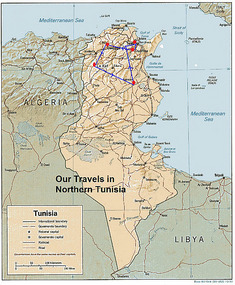
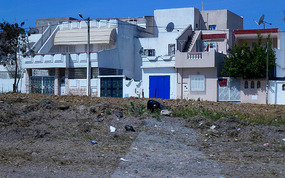
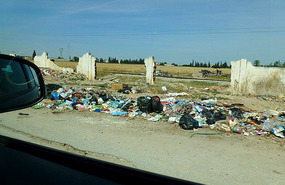
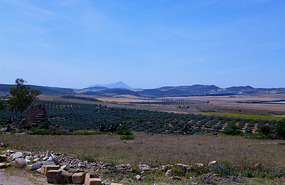

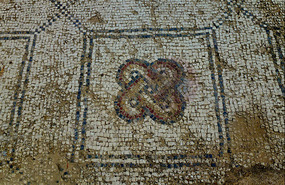

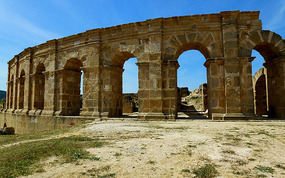

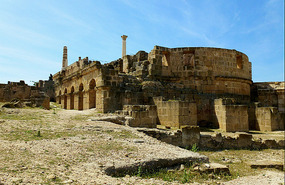
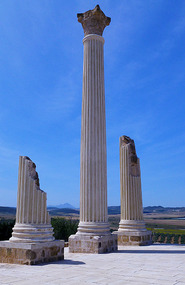
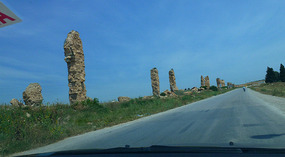
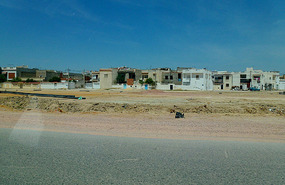
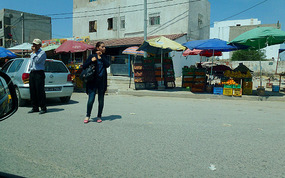
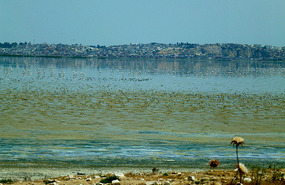
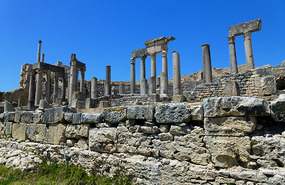
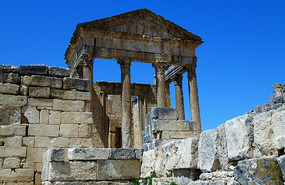
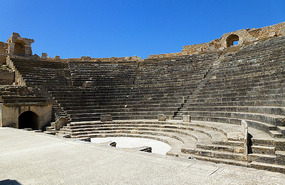
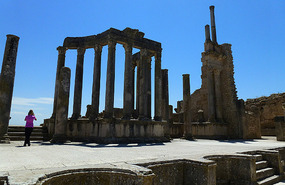
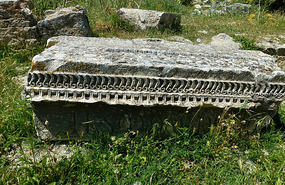
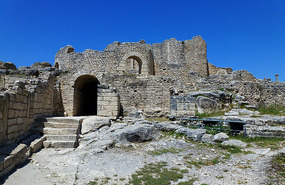
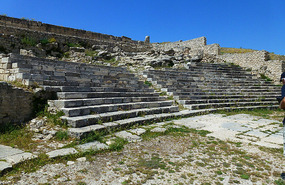
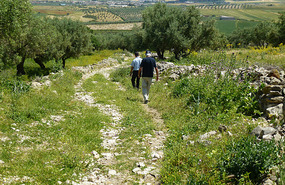
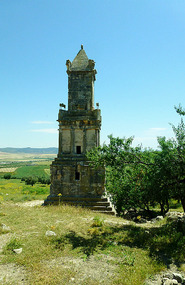
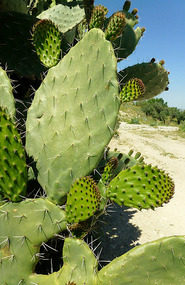
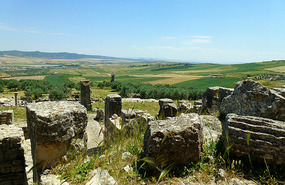
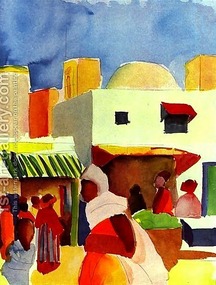

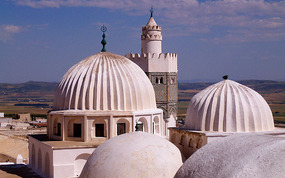
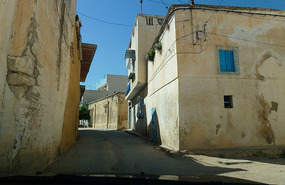
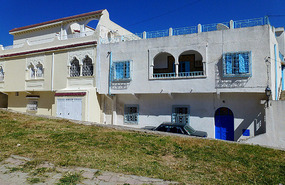
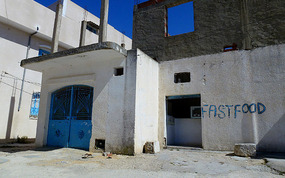
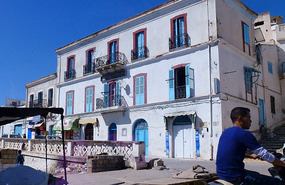
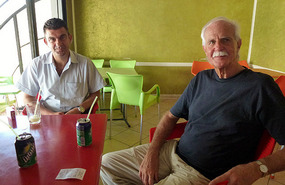
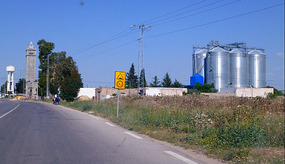
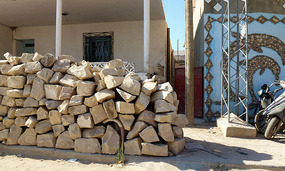
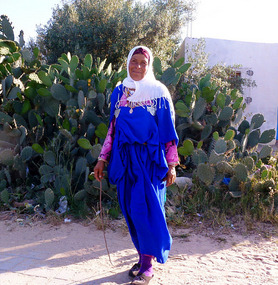
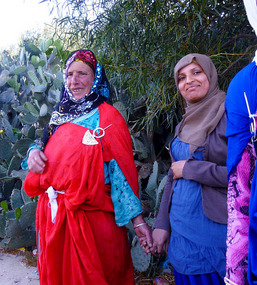
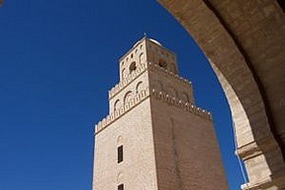

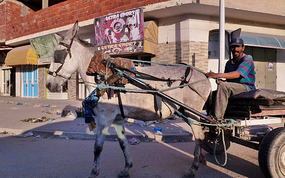
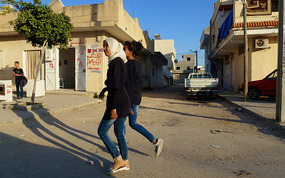
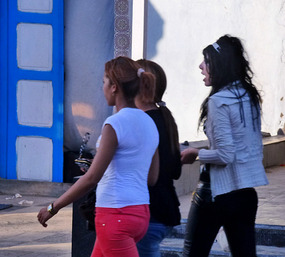
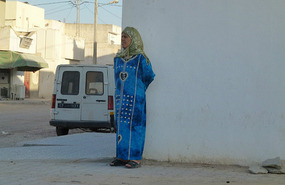
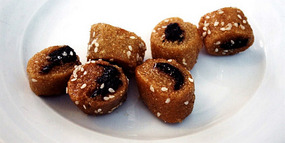
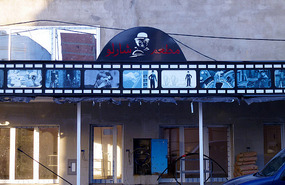
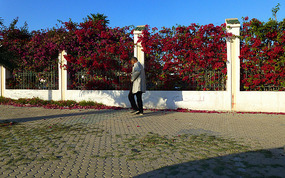
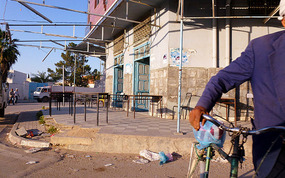





2025-05-22